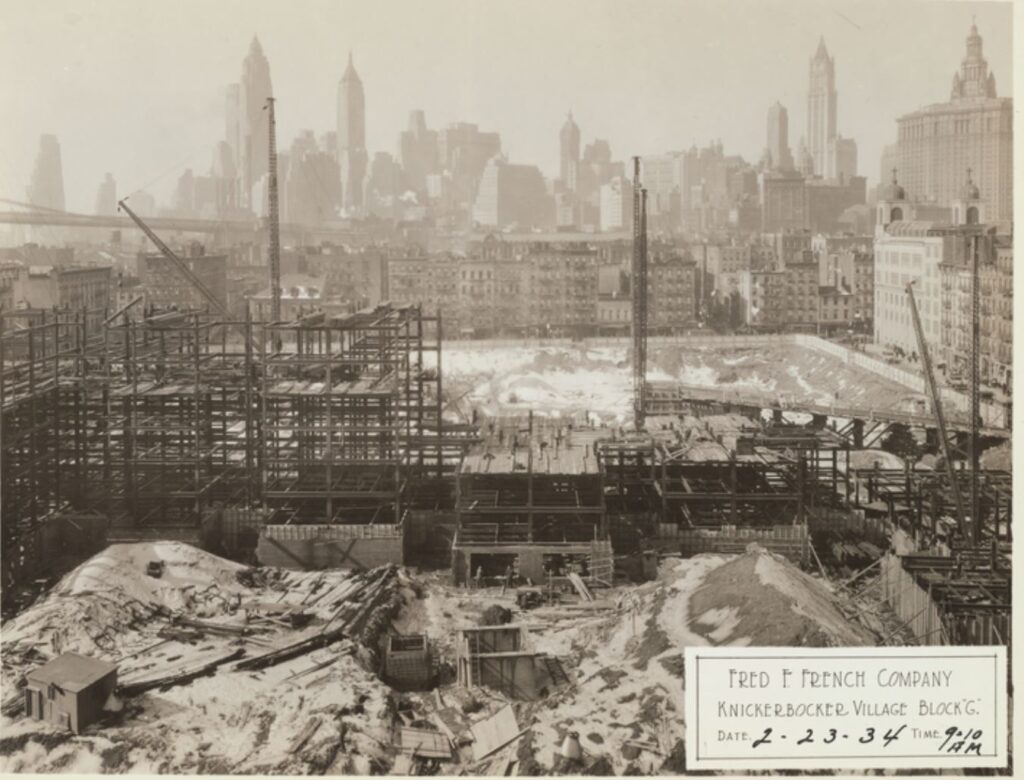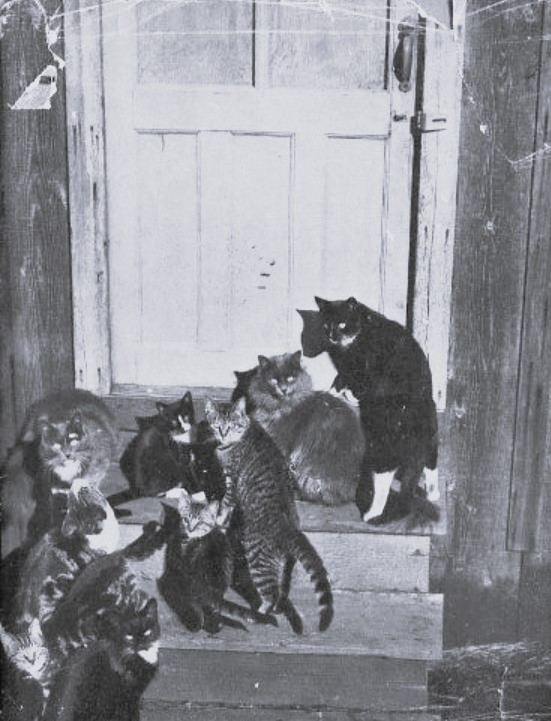
Mary Miner (aka Mary the Cat) was a proverbial crazy cat lady who had more cats than she could accommodate and care for. Like Rosalie Goodman, who also hoarded cats in the late 19th century, Mary lived in an ancient, dilapidated tenement house on the Lower East Side. The tenement, on Hamilton Street, was called The Ship.
Described by one reporter as “an old hag” who spent her days begging and going through ash cans looking for edible tidbits for her dozens of cats, Mary got in trouble one December day in 1886. She reportedly accosted several men on Cherry Street and, unbeknown to her neighbors or her cats, was sentenced by Judge Duffy to Blackwell’s Island for three months.
With their sole caretaker gone, the 50 or so cats that shared “a mean little dingy room” in the rear of 43 Hamilton Street with Mary and thousands of roaches became savage as they struggled to survive. Hearing their howls, neighbors could only peak through a “grimy window” to see what was going on inside the room. Unable to open the locked door, they called the police for help.
When Policeman Cullen of the Oak Street police station arrived, he found about 40 cats in the tiny, 10-foot-square room. Several of the cats were dead, including one wrapped in newspaper inside a closet and one that had been stuffed and mounted on a board. There was a large dish of chopped meat on the floor, and an old table served as a scratching post. Two “rank pillows” that had served as Mary’s bed were also on the floor.
When the neighbors learned that the cats of Mary’s cat farm were going to be evicted by the police, they gathered along Hamilton Street to watch the event. Policeman Cullen flung a wad of burning paper toward a dirty stove in order to frighten the cats and then used a stick to try to lure them out.
At first, the cats refused to budge and put up quite a fight. Some of them walked out the door, only to crawl back inside through the window. As the cats ran into the street, some of the women recognized their own lost cats, which Mary had apparently catnapped.
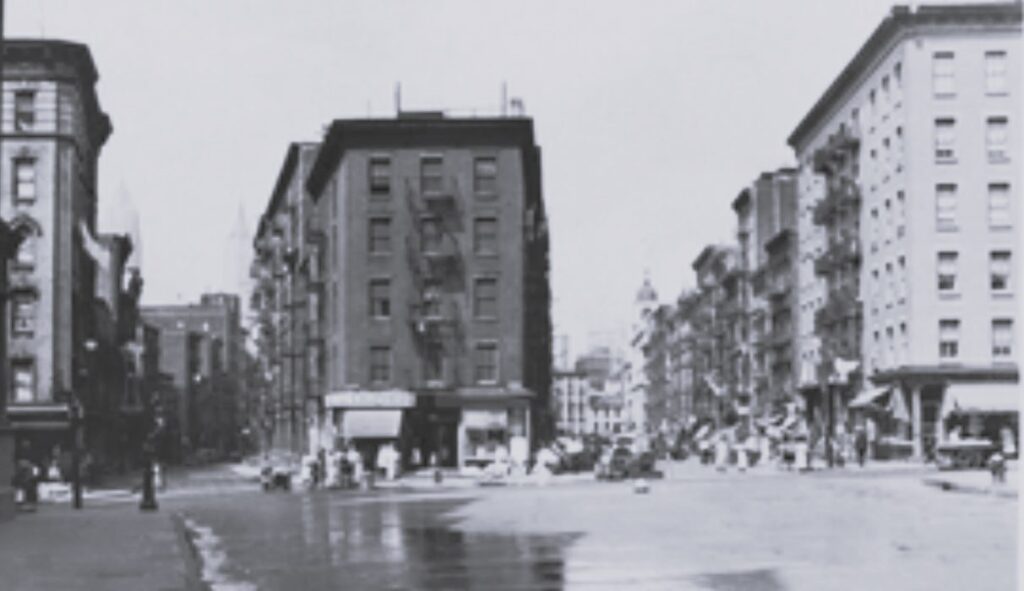
Once all the cats were out, the window was barricaded. The cats continued to attempt to get back into the room as a man cleaned and disinfected it the next day. The press did not report on the fate of Mary Miner or her dozens of cats.
A Brief History of The Ship on Hamilton Street
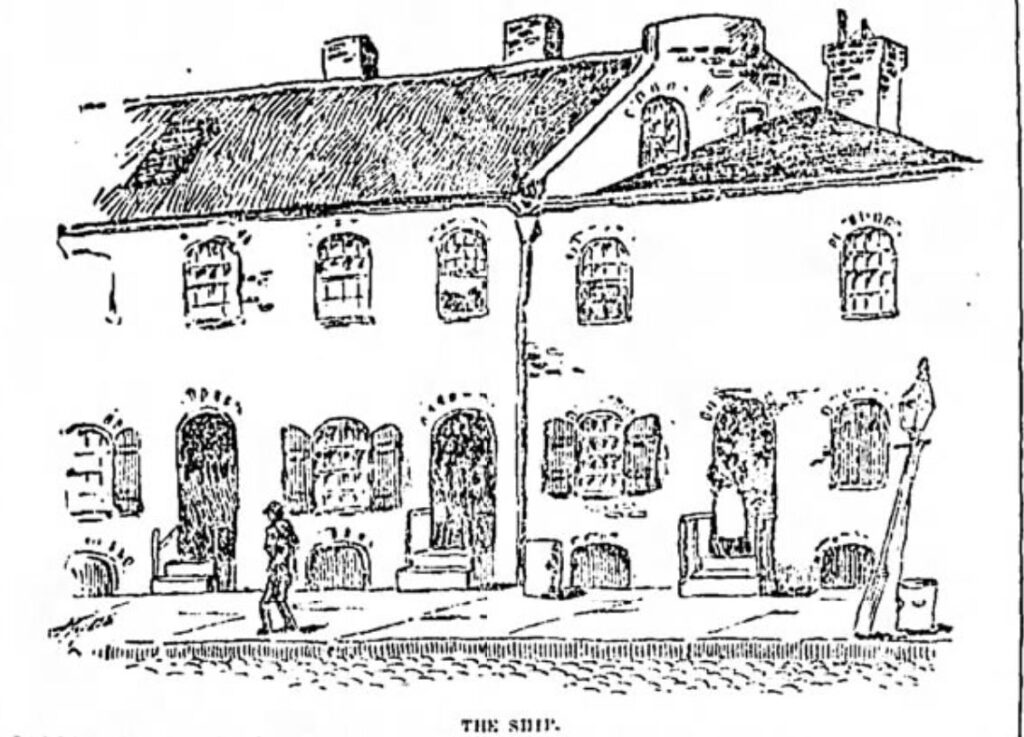
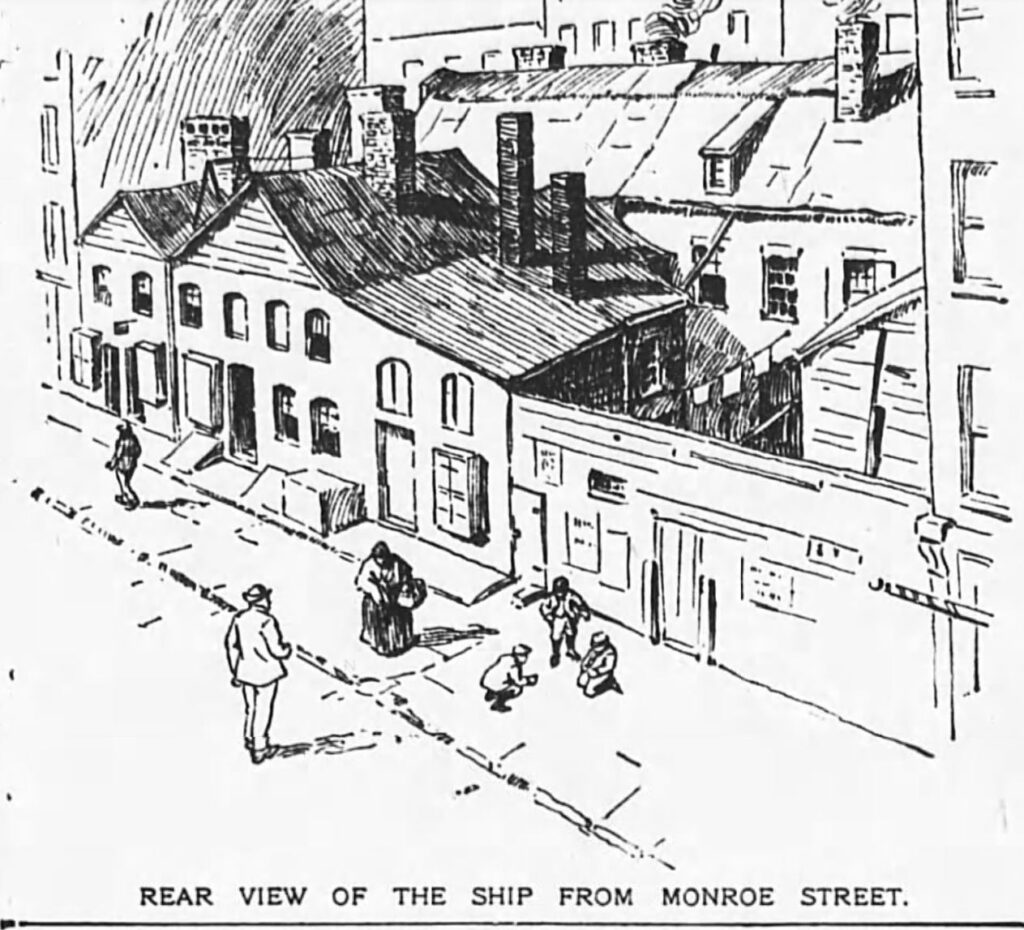
Hamilton Street no longer exists, but it was once a small block that ran parallel to Monroe Street between Catherine and Market Streets. As one newspaper described it: The street was just one block long, and had a crick where its original tracer, whether human or bovine, for it may well have been a cow path, turned aside for a hillock or a stump.
The old street was originally called Cheapside Street, and it ran through what had been the 56-acre farm of Harmanus Rutgers, who had purchased the land in 1728. In May 1827, the Common Council passed a resolution to change the name from Cheapside to Hamilton (Mr. David T. Valentine wanted to call it Jackson Street, but the original motion was carried.)

The Ship, comprising two buildings and seven houses numbered 41, 43, 45, and 47 Hamilton Street and 38, 40, and 40 1/2 Monroe Street, was on the northern end of Hamilton Street. There are no records of when any of the buildings were constructed, but it does appear that at least one goes back to the late 18th century.
During the late 18th century, Hendrick Rutgers may have used the original building, #41, as a taproom (he made beer on the property). He sold the building to Charles and Isaac Wright, the latter a blacksmith. In 1817, Edward A. Le Breton began operating a brewery at what was then 45 Cheapside Avenue.
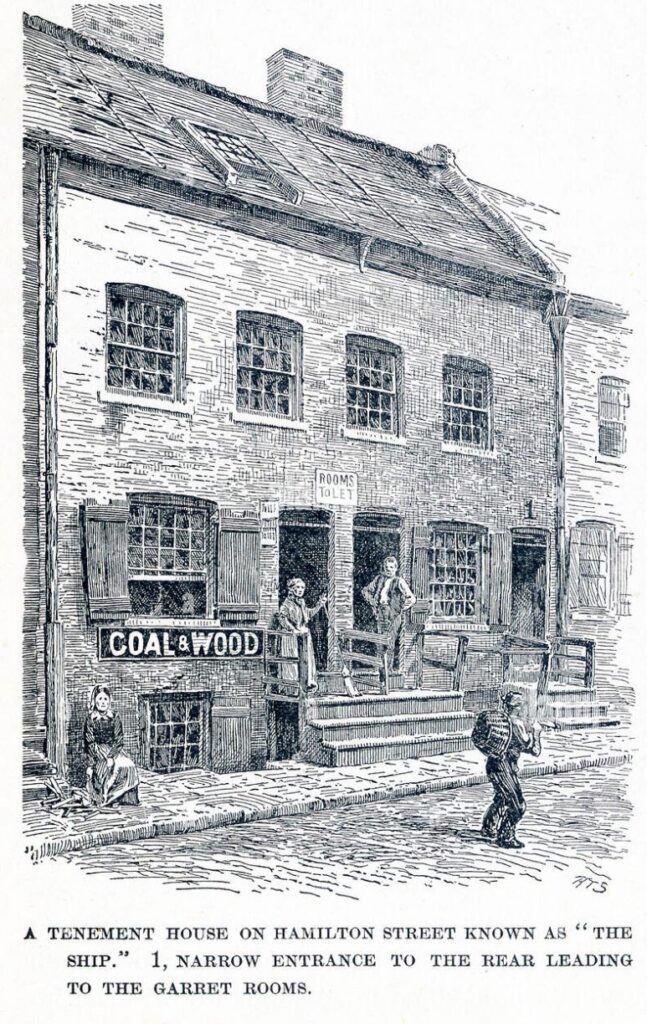
In the 1850s, #41 was a sailor’s boarding house (perhaps why the building was called The Ship). The cellar of #41 and #43 was also used to store whisky and other ales at this time. At some point, probably around the 1860s, the buildings were converted for tenement use.
In the 1890s, around the time this story of the cats took place, there were 16 rooms (called cabins) in that section of the The Ship numbered 41 and 43; the largest of the apartments had only two rooms.
The Ship was a two-story building with a brickwork exterior and timber framework, peaked roofs, and alternating doors and small windows.
Every rented room had its own exterior door and a small wooden stoop. An extra door in the center led to a narrow hall, which reportedly reminded one of “the steerage of an old-fashioned emigrant ship.”
Leading from what could be called the main deck (ground floor) were various narrow hallways that ended in a cellar “as dark and damp as ever was the bilge bottom of any old hulk afloat.” Residents called it “the hold” of the ship.
In 1886, Mary Miner was reportedly paying $2 a month for her hovel in this odd, dilapidated building.
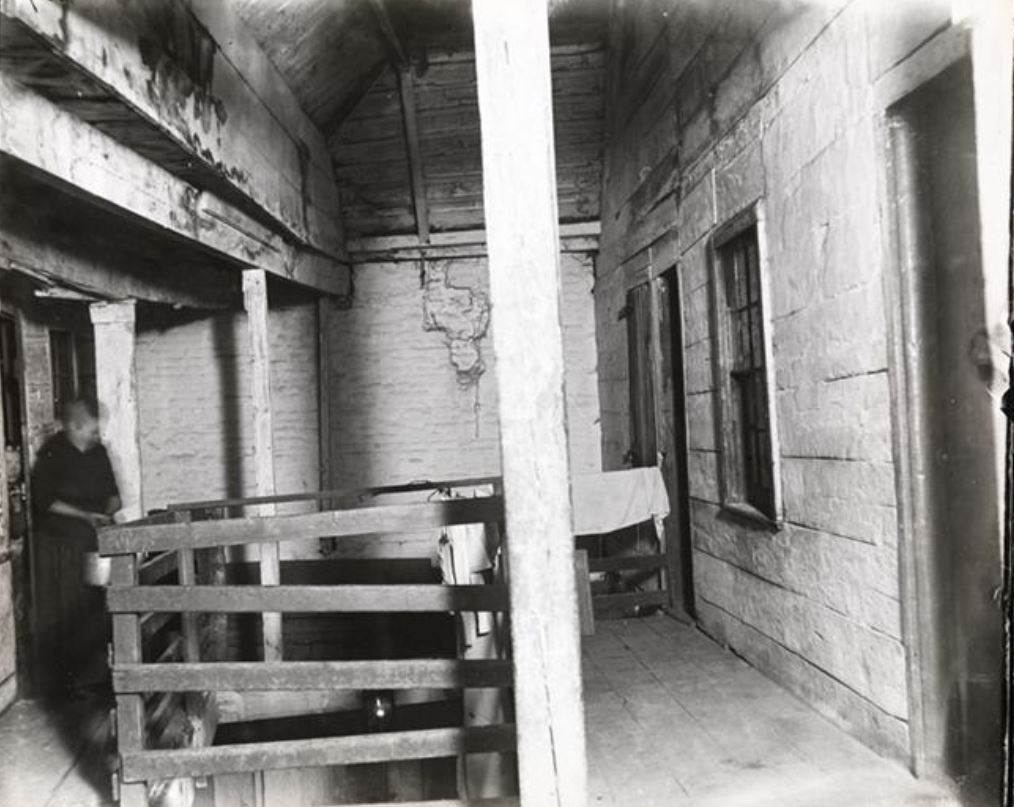
For many years, rumors spread that the city was going to condemn the building and evict the tenants. Following a visit in December 1895 by Police Commissioner Theodore Roosevelt and Jacob Riis, a journalist with the Evening Sun newspaper, the case for condemnation was taken more seriously. The Health Department condemned the building in March 1897.
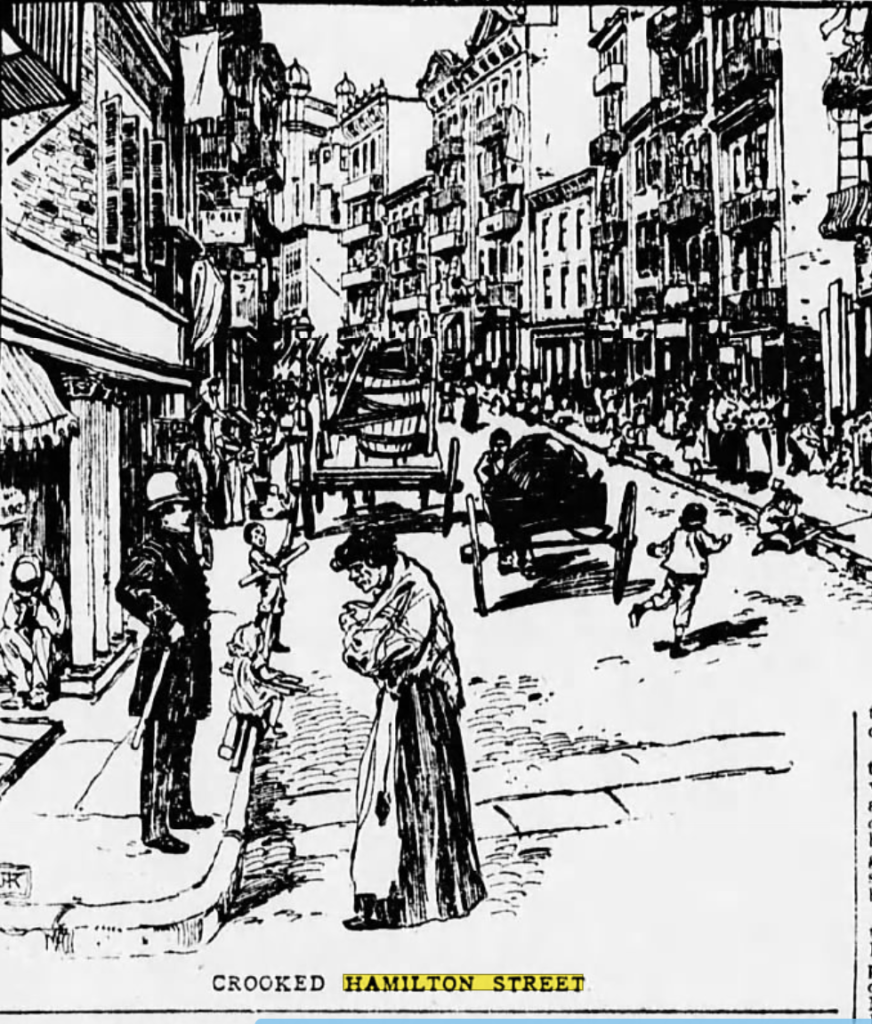
Sometime around 1900, a large tenement building was constructed on the site of the old Ship. At this time, the crime-ridden neighborhood was known as the Gap, which, needless to say, did not have a good reputation. (The block also accounted for 291 cases of tuberculosis from 1894 to 1904.)
In 1932 the City sold Hamilton Street to Fred F. French Operators, Inc., the developers of Knickerbocker Village. Governor Alfred E. Smith broke ground for what would be one of the city’s largest slum-clearance housing developments on October 11, 1932.
The new housing development would embrace two blocks bounded by Monroe, Catherine, Cherry, and Market Streets. Most of Hamilton Street was obliterated, save for one small section that is today the site of the Coleman Playground.
